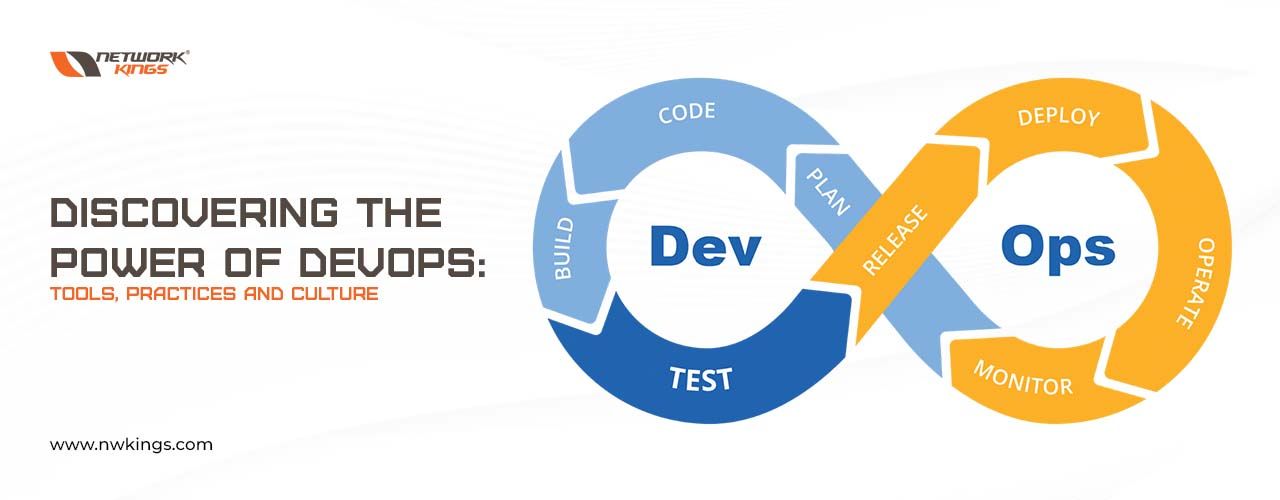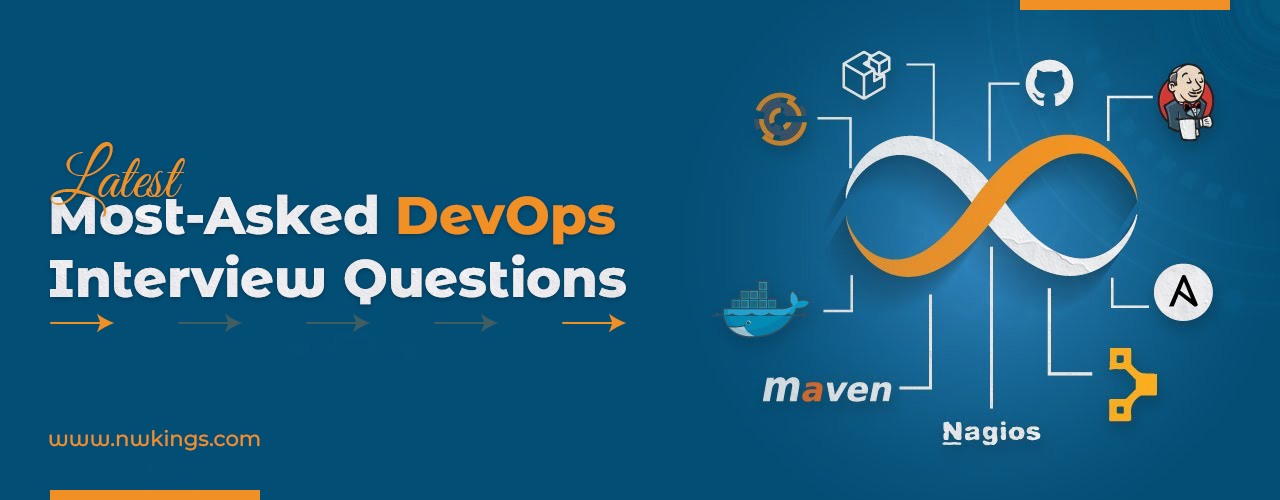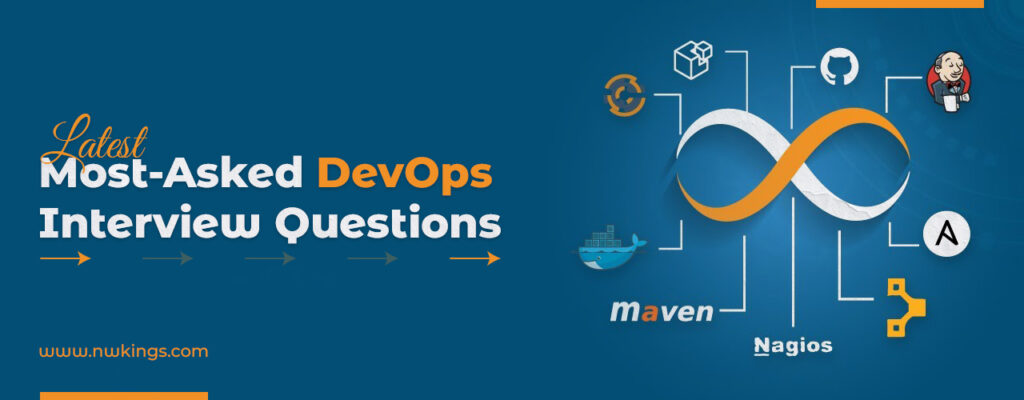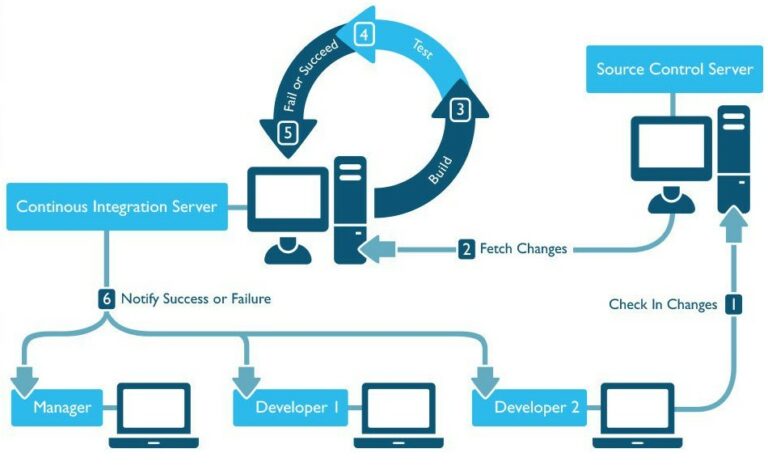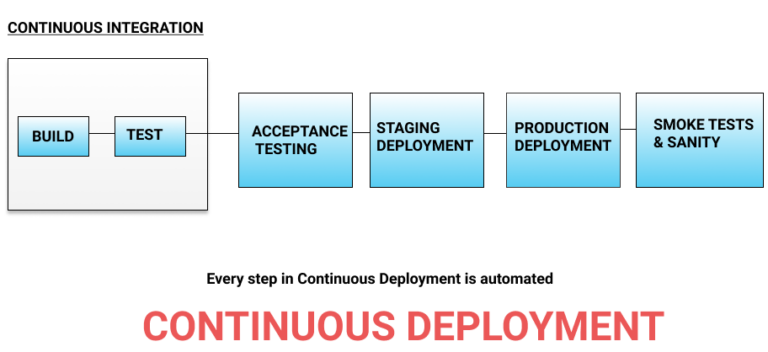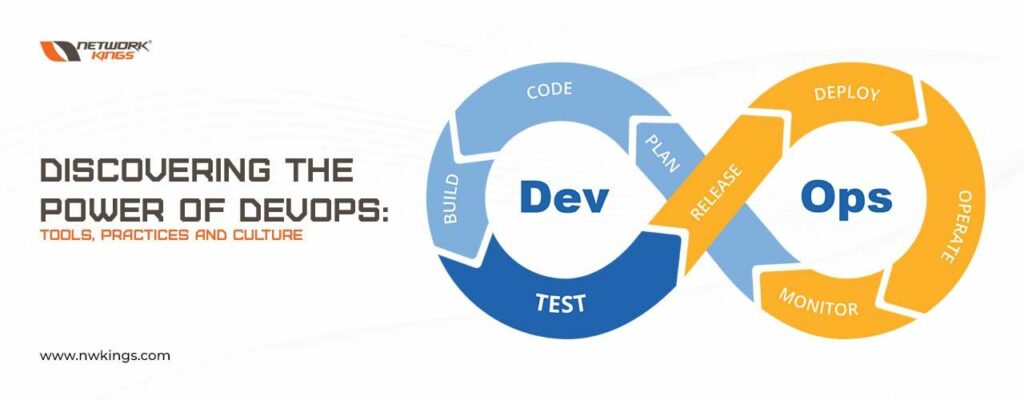
DevOps is a combination of techniques which can help organisations join up software development and operation teams. It concentrates on making processes smoother, automating tasks and talking between the members to ensure speedy delivery of top-notch services and products. In this blog post, we will look at what is DevOps, its advantages, tools, practices and culture to get a better grasp of how it works. With these details under our belt, organisations can use these DevOps principles for putting together an effective workflow system tailored for their team – but just how useful could that be? How would you need to adapt your approach with so many resources available out there?
What is DevOps? An Overview
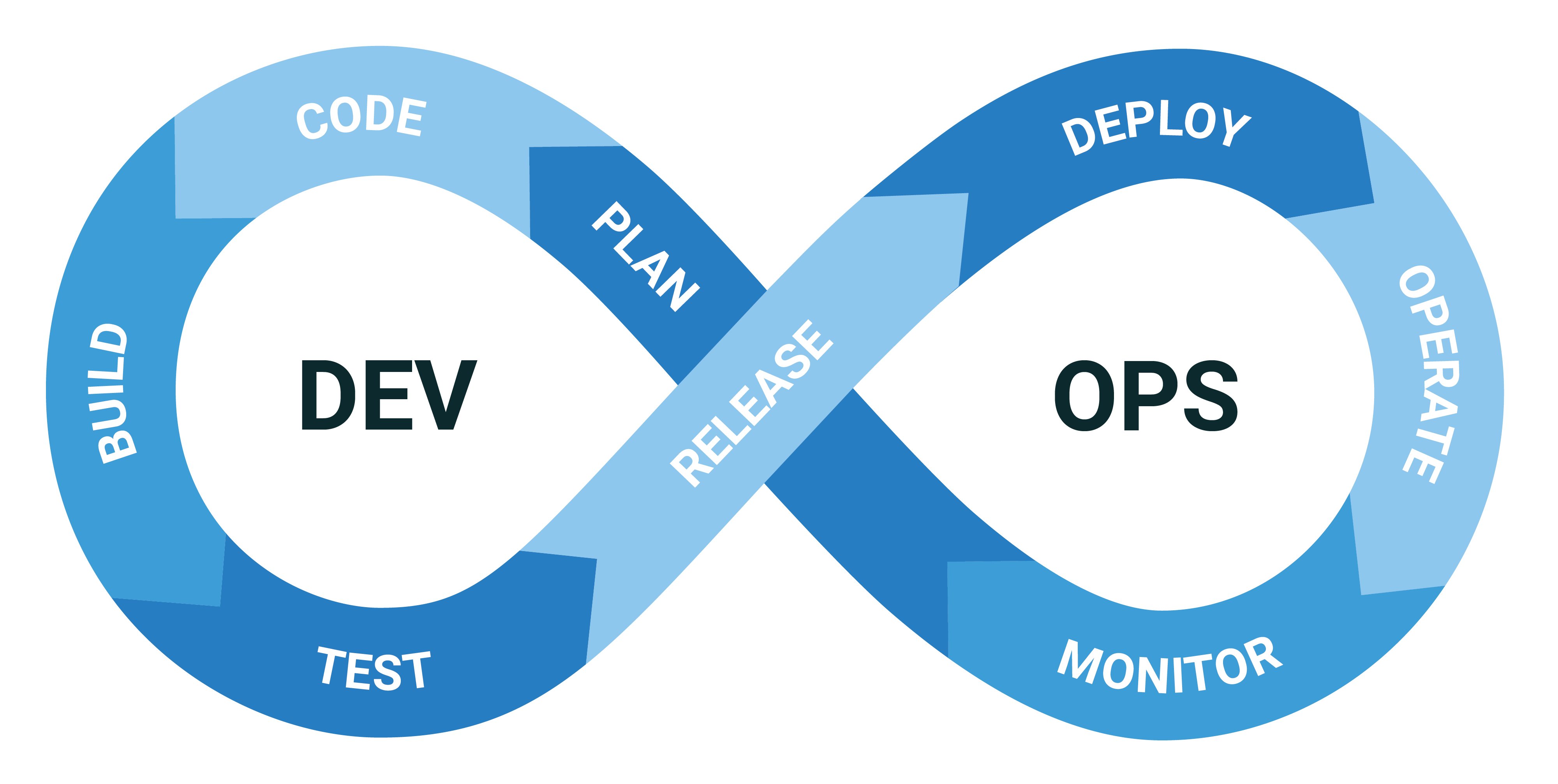
Ever heard of DevOps? If so, you are not alone. It has become a popular concept in software development and IT management. In short, it is an agile methodology which encourages collaboration between dev teams and operations to optimise systems quality assurance by speeding up the delivery of apps. At its heart are quick feedback loops, and time-to-market optimization with automation tools for transparency – all designed to bring both sides together.
The notion behind this approach is to enhance communications while ensuring teams are running smoothly when producing software solutions for businesses. With the money saved, companies can then allocate it towards other significant tasks in their organisation. This way, they know that their products will be delivered quickly and remain up-to-date with contemporary industry standards as time passes by.
DevOps incorporates a bunch of procedures which facilitate an organised workflow within a business concern, such as Continuous Integration/Delivery (CI/CD), Infrastructure as Code (IAC) and Configuration Management (CM). These help organisations realise remarkable savings on cost without compromising on productivity or quality – making them pretty much indispensable these days!
CI/CD and IAC are two processes that help bridge the gap between development and operations teams, leading to better efficiency in problem-solving throughout an organisation. CI/CD speeds up the process of getting software deployed while IAC helps manage complex infrastructure configurations efficiently using code instead of manual configuration which may take longer.
DevOps is a great agile methodology for product quality improvement by optimising pipelines with automated processes saving time-to-market as well as increasing cost savings – although it can be hard to grasp if your team isn’t used to this type of thing already! Nevertheless, it’s an invaluable tool when trying to reach success in whatever environment you’re working within.
Tracing the Emergence of DevOps

I found it quite interesting to trace the emergence of DevOps. The idea was born as a response to teams dealing with development and operations being out of sync – developers wanted more rapid deployment cycles while ops were battling to automate their current processes, which meant that software releases took longer than necessary so there became an urgent requirement for new methodology connecting dev and operations divisions.
This is when DevOps stepped in, allowing both sides to connect through automatization, cooperation, and communication. DevOps is a combination of IT operations and software engineering practices like constant delivery and continuous integration. By emphasising automated infrastructure, rapid deployment, and better communication between developers and operational staff; the DevOps movement looks to make organisations more adept at delivering applications with minimal effort in less time.
This added adaptability has enabled companies to stay relevant in today’s digital age by providing quicker updates on their products or services. To keep up with modernised methods such as cloud computing, containers, microservices architecture etc.. are becoming increasingly popular amongst businesses.
The past few years have seen a great surge in the adoption of cloud technologies, emboldening more companies to jump on board with DevOps practices and tools such as Automation (Jenkins), Orchestration and deployment (Chef) and Monitoring Tools (DataDog). This meant that they could develop applications faster than ever due to these services’ ability to scale resources without any manual input – kickstarting the whole movement. Not only did it reduce time-to-market but also saved them from compromising their application’s quality or performance.
As organisations realise how vital an agile approach towards IT Operations is nowadays when markets are changing so quickly, DevOps’ path forward looks brighter than ever before; this technology can provide increased scalability throughout businesses while cutting costs at the same time – who would not want that?
Analysing the Structure of DevOps

To grasp a clearer understanding of DevOps, it is crucial to explore its components and the processes that go into putting it in place. The way one goes about this is by practising Agile Development Methodology: breaking down the development plan into smaller segments termed ‘sprints’. Adopting such an approach enables developers to concentrate on individual goals without getting too overwhelmed with a project’s overall size.
As soon as one sprint is finished, it can be checked over by quality assurance experts right away and then put into work. This type of speedy testing has aided businesses in moving ahead of the competition by enhancing their time-to-market greatly. Another element of DevOps entails continuous integration (CI). This implies configuring automated tests for fresh code submissions so that unit tests are run without any delays when variations transpire in each cycle or sprint. Can you imagine how much easier this makes development? It is amazing to see what technology can do!
Continuous Integration (CI) is a fundamental part of DevOps as it helps ensure that code changes are tested quickly and thoroughly. This automation ensures all modifications work harmoniously with existing services, preventing any pesky bugs from going unseen until after release. Moreover, everyone involved can get updates in real-time regarding any issues arising – streamlining communication between stakeholders.
Additionally, CI provides an easy way to keep track of progress since automated test feedback is stored collectively in one place – facilitating the process further! The next step saw the introduction of infrastructure automatization tools like Chef or Puppet which allowed developers to rapidly deploy their projects through numerous environments without needing manual assistance; taking out tedious traditional IT procedures normally associated with such tasks and saving time for pivotal development duties instead!
Finally, these elements pieced together allow organisations to reduce operational costs while simultaneously speeding up software delivery – providing them with a perfect opportunity to stay ahead within competitive markets.
Unleashing the Power of DevOps Tools
DevOps has been making waves in the software development landscape recently. DevOps tools are there to simplify and hasten up the process of creating applications. These assist with getting rid of redundant tasks and cutting back hours on lengthy operations, leading to faster product releases and services made available sooner than otherwise possible.
There’s currently an array of DevOps solutions out there – from build automation and source control management to automated testing as well as production deployment processes. How beneficial could these be for your business?
In a nutshell, these efficient aids can make creating software smoother. You need to have familiarity with the newest tech stacks, like Javascript or Python and systems such as Linux or Kubernetes to use DevOps tools effectively. As well as this understanding of advancements in technology it is also important to be aware of different roles which teams must take on – including release engineers, product owners and developers. What part will you play?
The aim is to have all these people from the team working together effectively, combining their skills with the appropriate set of DevOps Tools so that an effective software development workflow can be achieved. Utilising DevOps Tools usually results in better collaboration within teams as they can get improved visibility across projects and developers will receive immediate feedback on code alterations which they make.
Moreover, this cooperated relationship often leads to shorter delivery cycles meaning products reach end users quicker than ever before – an invaluable advantage for any business struggling hard to stay ahead! Fundamentally, what it boils down to is faster cooperation combined with quickened delivery times equals happier customers who should always have top priority when deciding which tools your company decides to utilise for its software advancement pursuits.
DevOps Practices for Business Efficiency
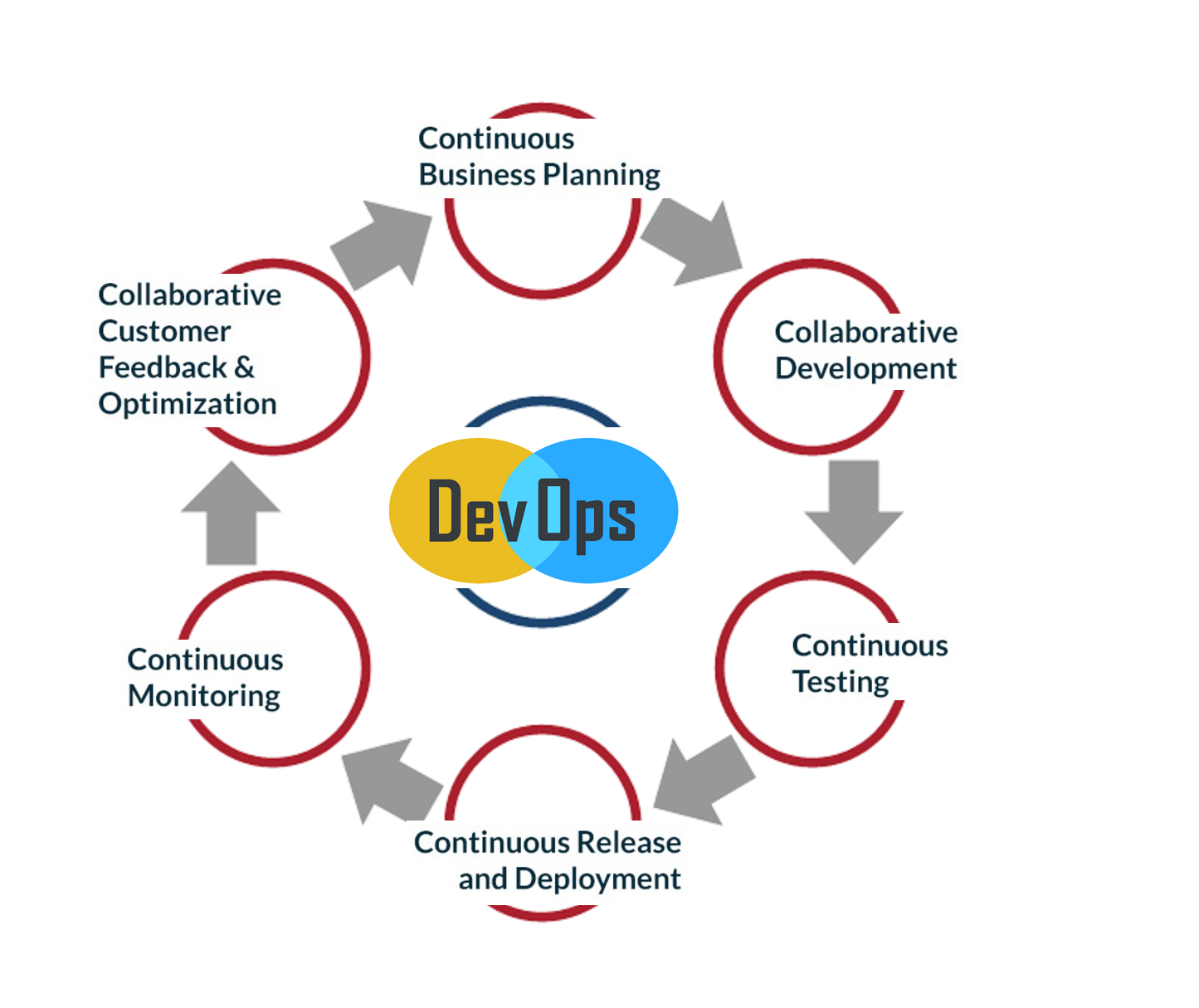
DevOps Practices for Business Efficiency have become very popular in the IT industry as companies all over the globe are using them to increase their efficiency and bolster their profit. DevOps is a set of practices which help businesses close any gaps between development and operations so that they can reduce the time taken for market release, automate infrastructure inspection, and monitor services at scale.
Companies use various DevOps approaches to trim down product production timelines; cut back on expenses; and gain better quality assurance results while fostering collaboration within departments across organisations – something which was not possible earlier!
Identifying where your organisation needs improvement is the first step to any successful DevOps implementation – both in terms of processes and tools. An in-depth assessment can help pinpoint areas of technical debt that have been left unresolved as a result of poor process management or up-to-the-mark feature development. Once you have taken stock, it is time to draw up an action plan on how best you can transition from manual processes over to automated ones. Automation helps developers and operations teams speed things along while still ensuring quality control every step of the way.
It is essential to think about shifting the culture to make sure that communication between teams is prioritised, and collaboration on various projects occurs. Plus having regular meetings with key stakeholders can be invaluable for effective project planning too. What better way could there be to improve inter-team relationships? How can you incentivise everyone involved to work together more effectively? These are questions worth asking when it comes to establishing a successful culture shift!
Once these steps have been taken, your team can then utilise DevOps solutions such as Infrastructure-as-Code (IaC) which enables users to programmatically define the environment they require for their applications; Continuous Integration (CI)/Continuous Delivery (CD) helps move code changes through various stages quickly; Container Orchestration assists in automating containerised infrastructure deployments; Infrastructure Monitoring allows applications to be tested more often so anomalies are identified sooner; whilst Configuration Management guarantees all servers are equipped with the desired settings each time they get re-provisioned.
Employing these combined techniques not only increases the speed at which software is produced but also cuts expenses related to manual processes like training personnel or buying new tools that might otherwise be required if operations weren’t automated. In addition, exploiting DevOps practices makes customer service much more dependable since faster rollouts minimise any probable downtime when delivering features or fixes into production systems.
On balance, organisations pursuing efficiency improvements should contemplate introducing automation strategies into their workflow via DevOps which could result in improved deployment times and overall better customer satisfaction.
The Advantages of Implementing DevOps
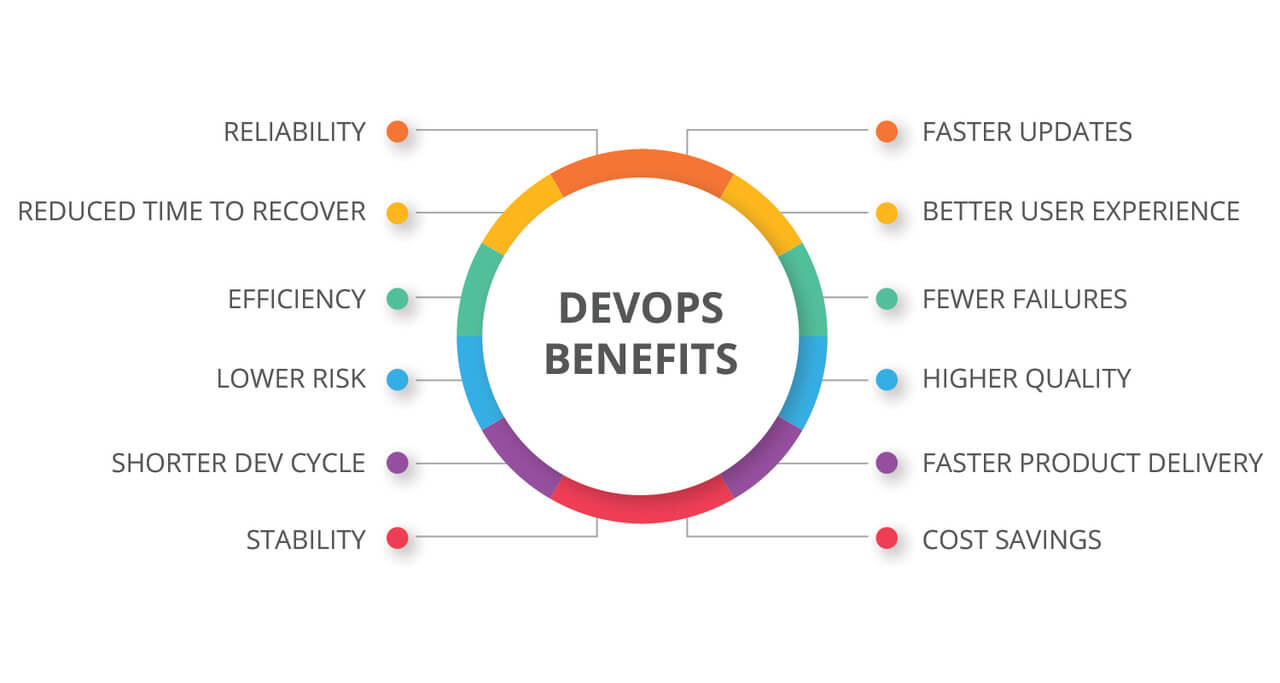
DevOps is a combination of two terms – Development and Operation. The main target of this approach is to speed up, improve dependability and increase the effectiveness of the software development process. DevOps encourages communication, collaboration and integration between teams so they can create more successful applications. It also promotes automation to guarantee that processes are as efficient and continual as possible.
The benefits which come from using DevOps are plentiful; fewer errors due to enhanced feedback loops leading to faster fixes when troubles occur along with improved customer satisfaction rates thanks to swifter delivery times all make implementing this technology an attractive business move indeed.
To begin with, DevOps helps to make the delivery cycles more efficient since teams become better integrated and their feedback loop is improved. This makes it possible for developers to take customer comments and changes in demand on board swiftly – resulting in a faster time to market that meets quality standards; all of which boosts both client satisfaction levels as well as profitability.
What is more, automating those tasks that used up too much valuable time (things like setting up servers or running tests) allows companies to be far more productive: instead of having staff focused on maintenance, they can focus their attention on innovation out there bringing extra value-adding features at an even quicker rate than ever before. Adding further benefits unifying development and operations beneath one roof reduces siloed thinking between departments over time improving collaboration across teams along the way.
Lastly, using DevOps techniques such as Continuous Monitoring when deployment errors happen helps them get identified quickly so resolution times are reduced even further – enhancing business performance while elevating customer gratification scores!
The Role of DevOps in Modern Organisations
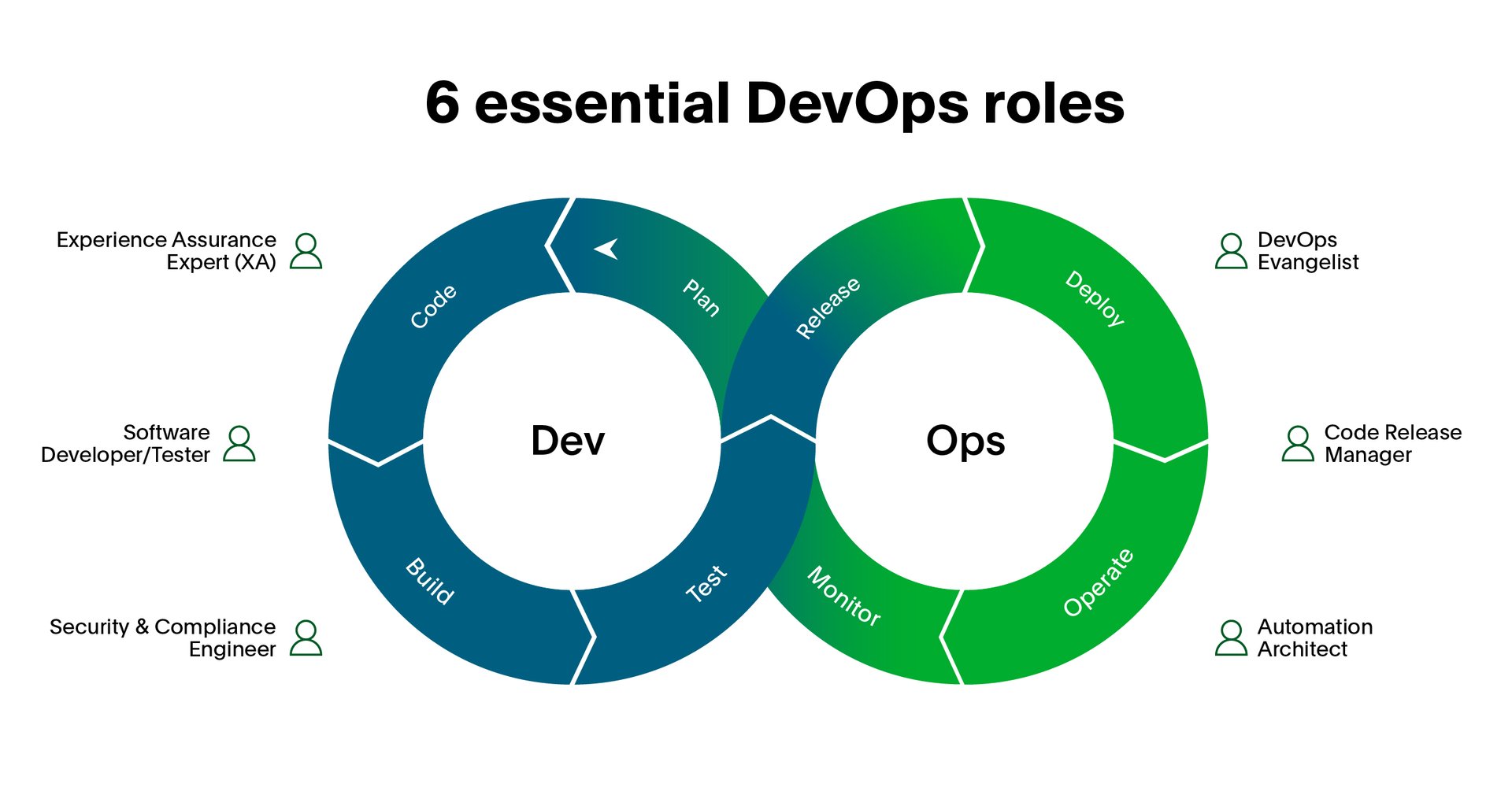
It is no exaggeration to say that DevOps has created a real stir in the domain of software development and IT services. But what is it all about? How does it work? And why exactly is this such an influential tool for modern organisations? Simply put, DevOps encompasses all tactics and instruments used to deliver software quickly and competently. It unites development, operations, testing, implementation, system architecture as well and support into one single platform which makes life easier both for developers and operators alike.
Automation and collaboration between departments are allowing firms to get products out quicker while keeping bugs at bay and making sure quality control does not suffer. Amazon, Google and Netflix have been taking advantage of DevOps procedures for a long time now yet lately traditional physical stores have also begun to realise the value of this method. By having an all-inclusive system in place that manages code changes on a vast scale quickly, organizations can significantly decrease the amount of time until they hit the market whilst still maintaining high product excellence.
The use of DevOps means that a team can test out new features and changes in no time, without having to go through long coding cycles or perform laborious tasks. This leads to faster project development times, fewer mistakes being made down the line and an overall more satisfied customer base.
Furthermore, implementing DevOps also ensures reliability between different systems as they are all interconnected; if something should malfunction with one part then it is simple enough to spot which area needs extra attention instead of randomly trying to identify where exactly the issue stems from initially.
It is plain to see why so many companies have embraced DevOps processes – that way they can remain competitive in today’s ever-evolving landscape. By bringing together various teams under a single umbrella approach – no matter the size of those teams – organisations can put out revolutionary new solutions while keeping quality high across delivery.
Furthermore, with development and operations working side by side in an agile environment, everyone is on board with each other’s aims: something that results in far less blame being thrown around than when departments work separately within the organization. All things considered, DevOps helps businesses thrive by smoothing up processes all through their entity – from preparation right down to deployment of completed products. What could be better?
Creating a Positive DevOps Culture
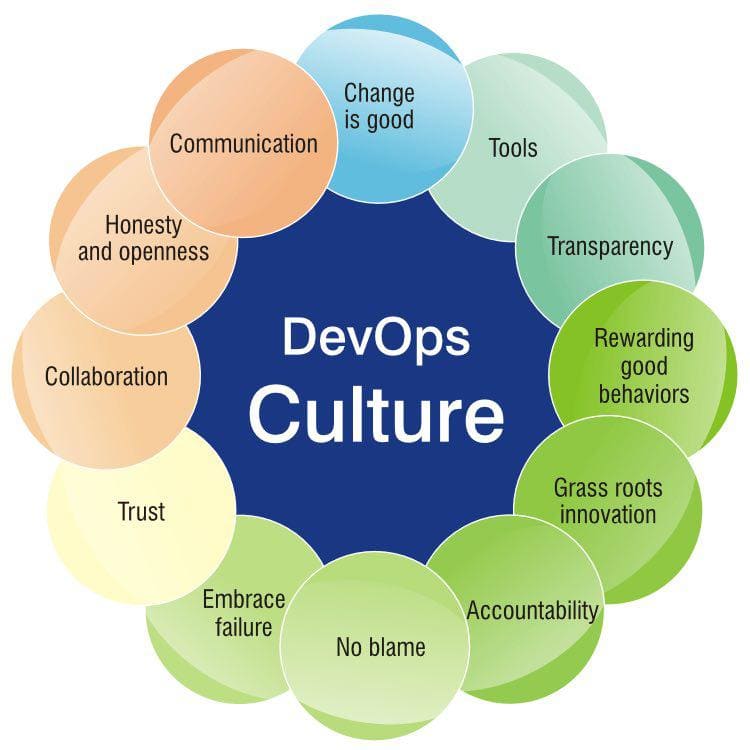
Talking about DevOps usually leads to technical details and how to use the latest tools etc but what people often overlook is that success with DevOps isn’t just a case of technology, it is all down to creating an appropriate culture. A successful environment for everyone concerned can be achieved when you have created a welcoming DevOps culture, enabling staff from different departments to work together in harmony plus produce great results without sacrificing quality or deadlines.
This implies that both teams should be cognizant of each other’s duties, which will help them coordinate when formulating, carrying out and dispatching projects. It is a must to set up an evident communication channel between the two teams so that the objectives and aims connected with the project can be understood without difficulty.
Collaboration of this kind could lead to beneficial remarks from the operations team regarding any issues that may arise while delivering the project – it seems like working collaboratively helps identify problems before they are too deep-rooted!
Creating an atmosphere which makes teams feel at ease to express their true opinions will help build trust between them and create respect for each other’s roles in the entire process, leading to better overall collaboration. It is also beneficial if everyone involved has a good knowledge of what is expected from every team member throughout the project cycle – getting expectations set out right away can go a long way in aiding any team-based project to succeed. Have you seen this work well?
As developers, it is important to ensure that they take charge of their solutions from the beginning by taking responsibility for every stage of development until completion instead of quickly handing them off as soon as possible. This will mean that everyone involved holds them accountable in case any problems or bugs emerge after delivery. If this happens, all parties are kept up-to-date about any interruptions or maintenance linked with their developments and enable everybody concerned to act swiftly if required. In addition, having ownership over a project can help motivate developers too so encouraging an environment where people feel empowered can be beneficial when creating software applications!
Giving developers more responsibility can give them a sense of empowerment and authority; it helps them to have control over how their solutions are implemented in production environments, which encourages ownership within the DevOps team. Automating processes is also key: by reducing the manual effort needed for things like software deployment and infrastructure management, you will be able to speed up time-to-market while still ensuring reliable deployments across production systems. This automation will eliminate potential human error while simultaneously increasing speed and efficiency – all leading towards improved performance that makes use of DevOps principles.
Understanding Challenges in DevOps Adoption

DevOps is a relatively new concept in software development and IT operations that has become popular over the past ten years. It’s an amalgamation of tools, procedures and processes designed to foster collaboration among teams to achieve common goals. The advantages of adopting DevOps are evident – increased speed when launching applications and enhanced agility – but there can be some difficulties associated with its implementation.
The biggest problem surrounding bringing DevOps into practice is cultural: how can groups used to working independently come together and work on one project? This requires everyone involved to change their focus from individual success towards collective accomplishment which will undoubtedly require compromises despite different methods or opinions about operating practices. Asking yourself ‘How do we nurture this transition?’ may help you build bridges between departments so you are all pulling in the same direction!
Establishing trust between different departments or roles can be a challenging obstacle, especially when each party does not understand the goals and objectives of the other. To help tackle this issue, reducing bureaucracy within an organisation is essential so everyone can focus on their tasks efficiently. Moreover, having technical expertise in DevOps implementation is also vital if you want to capture its benefits fully; for instance, understanding automation tools and other relevant technologies is necessary for successful adoption it.
They need to be able to identify what techniques and tools will work the best in their particular situation. To do this they will have to make sure there are enough resources available both for people, such as training costs or recruiting those who already know about it; and money too! Have you got a good knowledge of these kinds of things? Do you feel confident that with access to the right information and funds your organisation can thrive?
At the end of it all, there is always resistance from senior management or other stakeholders due to possible short-term cost implications associated with switching over from existing legacy systems. Though they may understand the long-term value that stems out of implementing DevOps, shelling funds upfront without any assurance for a return on investment within a certain window is something they might not be willing to do.
In conclusion, getting familiar with challenges linked to deploying DevOps becomes paramount if organizations wish to take advantage of its full potential while minimizing disruption during operations. Being conscious about these problems early can help teams focus efforts towards resolving them before proceeding into their voyage into DevOps land!
Case Studies Highlighting DevOps Benefits
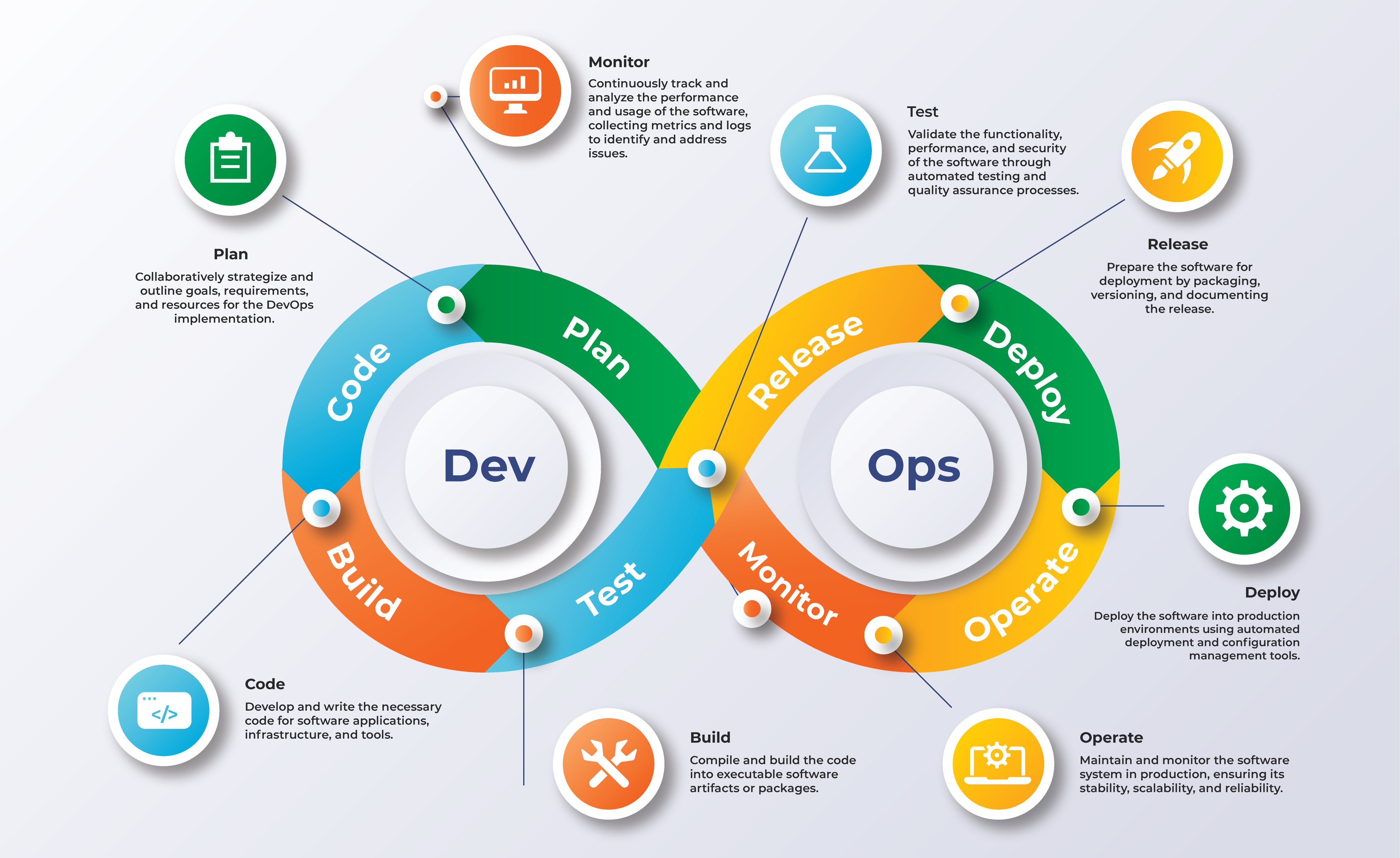
When it comes to what DevOps is, it is worth considering how this approach has boosted the productivity and success of organisations. Examining case studies gives us an insight into all the great advantages that come with using DevOps. By checking out different firms which have employed DevOps we can get a clear idea of their gains from doing so. A noteworthy example here would be Amazon – they began working with DevOps in 2002 when constructing their own substitute OS – Amazon Web Services (AWS). What makes AWS stand out?
They managed to implement updates on their services swiftly, which cut the time needed for releasing new features. This allowed them to broaden their product range and make it available for more users in a shorter period. As a result, AWS turned out one of the most profitable cloud computing solutions that we can find nowadays. Another success story is connected with Netflix company – they took up DevOps as a chance to meet customers’ expectations and deliver even bigger amounts of content faster than ever before!
By ditching manual processes in favour of automating their delivery pipeline, the BBC were able to release updates quicker and cut down on errors present in their codebase. This allowed them to quickly roll out fresh services while still keeping high levels of quality across development stages.
Consequently, they now provide a broad library of streaming content for worldwide customers – an accomplishment that has enabled them to stay competitive with other media organisations who have been pouring money into modern tech solutions. Just imagine how far this innovative approach could take the broadcasting giant – what new possibilities will it open up?
The change brought about greater efficiency and scalability to their operations, allowing them to reduce code deployment times by up to 70%, cut average downtime in half provide better data security through regular checks of safety protocols across all systems. BBC executives were thrilled with the cost savings from DevOps and reported higher customer satisfaction rates for both web apps and mobile apps.
It is easy to see that introducing DevOps into an organisation can lead to many positive outcomes; quicker time-to-market results in improved retention levels, costs are drastically reduced, quality assurance remains high due to continuous integration techniques employed while automated deployments help improve scalability – leading companies of any size towards increased profitability regardless what sector or service they provide.
To conclude, DevOps is not just a cultural transformation; it is an attitude and philosophy that combines software development with operations. It helps organisations to become more agile and effective while cutting costs at the same time. By automating processes, increasing deployment cycles, and improving collaboration between all members of staff involved in the process – DevOps can help teams achieve even greater things on shorter timescales.
Plus there are many other benefits such as improved communication which leads to quicker problem identification and resolution; scalability of products is increased too whilst security measures are also heightened – resulting in enhanced customer satisfaction! So by introducing DevOps practices into your organisation you certainly won’t be short-changed when it comes to benefiting from this innovative approach – so why not do it today?
Are you raring to go into the world of DevOps? Our DevOps Master Program is an all-encompassing program designed to give you a boost in this continuously changing area. Whether or not you have prior IT experience, our course will help cultivate the aptitudes and qualities required for becoming a successful DevOps engineer.
We furnish an immersive learning experience filled with interactive talks, hands-on laboratory exercises as well practical projects. You will look into notions such as automation, architecture design, source control management, consistent integration and delivery systems monitoring analytics cloud infrastructure container technologies among other things.
Our instructors are extremely knowledgeable – they pledge dedication in aiding your path towards mastering being a proficient DevOps engineer: They will take it step by step along your educational voyage! So what’s holding back on getting started? Sign up now.
Welcome to our DevOps Master Programme! Fancy getting yourself some serious expertise and knowledge in the field of DevOps? You have come to the right place. Our programme provides you with everything necessary for taking your professional career up a notch – giving you all the skills and resources needed so that eventually, by the course’s end, you will be qualified as a certified practitioner. Plus we provide an innovative training style too – one perfect both for those just starting on their journey or experienced professionals alike.
Our scheme will give a comprehensive learning experience including hands-on projects as well as practical workshops making sure that when it comes time to qualify, there isn’t any shortage of essential experiences upon which success is built. And if ever queries arise then know this: round-the-clock support stands ready at hand!
What’s more complete successful completion leads not only newfound expertise but also recognised certification too; jump aboard today via our DevOps Master Programme and start your DevOps mastery odyssey immediately! Do not miss out on such a chance –

